 SEVILLA FESTIVAL DE CINE EUROPEO 2009
SEVILLA FESTIVAL DE CINE EUROPEO 2009
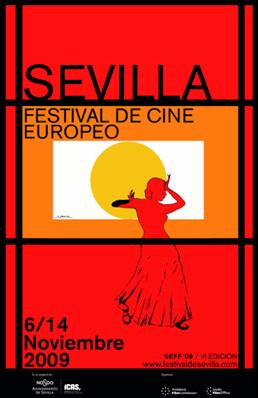
SEVILLA FESTIVAL DE CINE EUROPEO 2009
O EL AÑO DE LAS MUJERES DE CINE
Es la primera vez que el Certamen, que se ha celebrado en la capital hispalense del 6 al 14 de noviembre, presenta mayoría de realizadoras en su Sección Oficial, según destacó el director de la muestra, Javier Martín-Domínguez, y ello subraya el hecho de que las mujeres son las que realizan una cantidad significativa de las películas más interesantes procedentes de Europa.
Ha sido una buena ocasión para comprobar una vez más la realidad de la igualdad entre sexos. Si alguien tenía la esperanza de que las féminas aportarían nuevos puntos de vista, nuevos estilos creativos u otras novedades, consecuencia natural de las cualidades siempre atribuidas a su naturaleza femenina, ha podido descubrir que la asfixiante globalización llega hasta el cine y que su mirada no difiere en realidad de la mirada de ellos, los mismos temas, el mismo tratamiento, el mismo estilo de un cine que no nos lleva a ninguna parte, que viene proliferando año tras año y cuya presencia en el Festival no termina de explicarse. Esto sea dicho generalizando, sin embargo hubo aciertos y algunos se han reflejado en los premios, otros no tanto…
Mención aparte merecen esas féminas de corta edad, las abundantes protagonistas infantiles que nos dan la medida de lo que va a ser en el futuro esa generación de actrices, niñas increíbles sacando adelante papeles con una madurez digna de mención…
En un festival con tal abrumadora presencia de directoras las mujeres se han hecho notar finalmente en el palmarés del Festival de Cine Europeo de Sevilla (SEFF) 2009 :
PALMARÉS DEL FESTIVAL DE CINE EUROPEO DE SEVILLA
GIRALDILLO DE ORO
'Lourdes' (Jessica Hausner, Austria-Francia-Alemania)
GIRALDILLO DE PLATA
'Nothing Personal' (Urszula Antoniak, Holanda-Irlanda)
PREMIO ESPECIAL DEL JURADO
'44 Inch Chest' (Malcolm Venville, Reino Unido)
PREMIO A LA MEJOR DIRECCIÓN
Roland Vranik ('Transmission', Hungría)
PREMIO AL MEJOR DOCUMENTAL
'Garbo, el hombre que salvó al mundo' (Edmon Roch, España)
PREMIO EURIMAGES
'Tears of April' (Aku Louhimies, Finlandia-Alemania-Grecia)
PREMIO DEL PÚBLICO
'Un profeta' (Jacques Audiard, Francia)
PREMIO EXTRAORDINARIO DEL JURADO
Pipilotti Rist ('Pepperminta', Suiza-Austria)
PREMIO DEL JURADO JOVEN
'Transmission' (Roland Vranik, Hungría)
GIRALDILLO DE ORO SECCIÓN OFICIAL : 'Lourdes' (Jessica Hausner, Austria-Francia-Alemania)
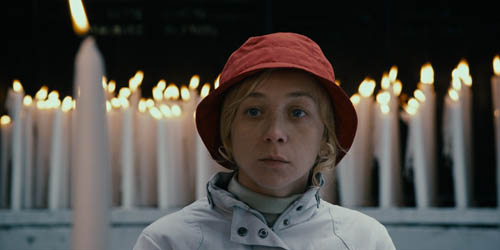
La tercera película de la austríaca Jessica Hausner (Hotel), Lourdes, era la favorita de la Sección a Concurso, una de las cintas mas arriesgadas y atrevidas..
Centrándose en una joven atrapada en una silla de ruedas, que aparentemente se cura durante una visita a Lourdes, la película critica 'la ambigüedad de los milagros', en palabras de la propia directora en Sevilla.
Se trata de un retrato irónico y pesimista sobre el negocio montado en torno al santuario de Lourdes, al que cientos de peregrinos acuden en masa todos los años para encontrar una cura milagrosa a sus enfermedades. Las imágenes de Hausner captan perfectamente el catolicismo kistch - muy poderoso visualmente - que envuelve a una mujer paralítica en su preriplo por el complejo mundo del templo y en las relaciones de rencor y envidia con los otros peregrinos y las monjas que los acompañan. Lourdes es una película cargada de preguntas sobre el sentido de la vida, a las que responde de manera maliciosamente pesimista.
GIRALDILLO DE PLATA SECCIÓN OFICIAL: 'Nothing Personal' (Urszula Antoniak, Holanda-Irlanda)
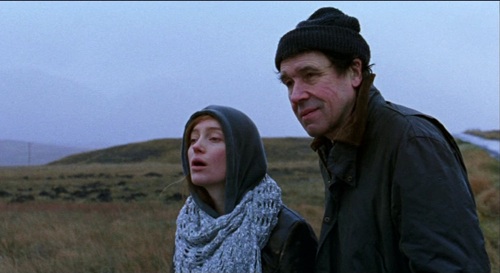
Un verdadero alivio en medio de una sección oficial de plomo. ‘Nothing Personal’ de la debutante Urszula Antoniak es una película con una propuesta interesante y un resultado más que notable en comparación con sus pesadas competidoras.
La soledad como elección de una joven holandesa que recorre Irlanda de forma vagabunda, esquivando el contacto humano, la civilización, por una razón que nos es desconocida pero que no resta veracidad al personaje. Poco importa, porque su directora, no pretende narrar hechos sino explayarse con la traslación en imágenes del verdadero sentimiento de soledad y lo que ello conlleva.
Singular y transgresora descripción de un personaje femenino excepcional en su apuesta consecuente y extrema por la soledad voluntaria y la libertad personal, sin paliativos, propiedades, obligaciones o vínculos y de uno masculino tierno, profundamente respetuoso, cultivado y generoso.
Un paisaje aislado, una casa solitaria, dos personajes solos por distintas razones, una la búsqueda voluntaria y otro el devenir de la vida. Nada personal entre ellos, salvo el amor que nace, inexplicablemente o quizás necesariamente. Da lo mismo.
La pareja protagonista mantienen una relación basada en la negativa a preguntas personales, lo cual depara momentos singulares, pero bien desarrollados. La joven, reacia a cualquier contacto verbal, al que responde con seca antipatía, acepta el cobijo y la comida a cambio únicamente de trabajo, lo cual va haciendo que a pesar de que luchan por conocer detalles del otro, mantengan un relación distante, a la par que de confianza mutua.
Aunque algo lenta a veces en su desarrollo, mantiene un tono y un pulso firmes, con personalidad y no falta de riesgo, huyendo de caer en lo más convencional y buscando la metáfora cinematográfica con momentos de inspirado lirismo. Como esos planos al final de la cinta que merecen por si solos la espera.
Filmada con una planificación rigurosa, con un extraordinario uso de la imagen, el color, la belleza de los paisajes costeros, la música y los silencios que la pueblan y que están integrados en la acción como elementos dramáticos de primer orden, el resultado es una cinta dolorosamente sensible, a ratos muy divertida, sin concesiones... Profundamente hermosa y radical.
(también se alza con el premio de la Asociación de Escritores Cinematográficos de Andalucía)
Es, sin duda, la más interesante y perturbadora de las películas vistas en la Sección Oficial. Como no podía ser menos, la preceden numerosos galardones en Certámenes internacionales como el de Locarno, Mejor Actriz, Mejor Ópera Prima y los de la Crítica y del Jurado joven. Y los Premios Nacionales del Festival de Cine Holandés, Mejor Película, Mejor Directora, Mejor Fotografía y Mejor Diseño de Sonido.

PREMIO ESPECIAL DEL JURADO: '44 Inch Chest' (Malcolm Venville, Reino Unido)

Un producto típicamente británico en su versión mas convencional.
Narra la historia de un peculiar grupo de amigos, mafiosos de poca monta, que llevan a cabo, con premeditación, crueldad y alevosía, el secuestro del joven amante francés de la esposa de uno de ellos por quien ésta quiere abandonarle.
Desarrollada prácticamente en un único escenario, a la manera teatral, con ciertos flash-backs que añaden datos importantes a lo sucedido, abundantes diálogos y situaciones reveladoras de las personalidades de los componentes de una omertá masculina vocinglera y machista hasta la náusea imponiendo, con violencia física y verbal, su código de honor a una víctima indefensa cuya versión de los hechos nos es negada. También la de la mujer, tal es la insidia de una película tramposa que sólo da la palabra y las oportunidades a la parte presuntamente agraviada a la que dan vida, y de qué manera, un reparto extraordinario en el que cabe destacar a los excelsos John Hurt, Tom Wilkison e Ian MacShane.
PREMIO A LA MEJOR DIRECCION / PREMIO DEL JURADO JOVEN: Roland Vranik ('Transmission', Hungría)
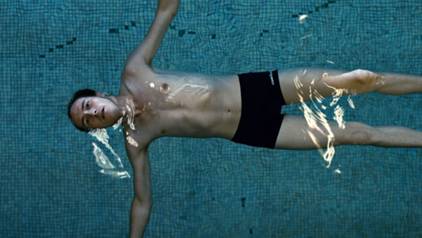
La húngara ‘Transmission’ habla de un mundo privado del universo audiovisual en el que todas las pantallas se han apagado por causas no identificadas. Y del impacto que tal hecho provoca en unos seres humanos que han sufrido por esta causa una pérdida de objetivos vitales y de identidad individual y colectiva.
Este planteamiento que en principio es interesante y del que se espera vivamente un desarrollo imaginativo se queda en eso, un simple planteamiento con una realización plana, reiterativa y soporífera, un producto que no tiene ni pies ni cabeza.
No se entiende entonces que un título que había cosechado numerosos ronquidos durante su proyección, aparte de numerosas huidas de la sala de proyección, termine con dos premios de esta categoría.
Porque si se entiende da miedo. Da miedo pensar que el jurado joven, futuros cineastas, pongan a cintas como esta por las nubes. Aprovechemos ahora entonces para ver cuanto cine podamos porque el futuro se presenta verdaderamente gris, gris-plomo.
Una vez cumplidos con los respetos debidos para con los premiados, haremos referencia a varias películas de particular interés:
Singularidades de una Chica Rubia. Portugal, Francia, España. Manoel de Oliveira

El centenario Manoel de Oliveira, tiene 101 activos y envidiables años, ha encontrado la fórmula para renovarse y ser fiel a sí mismo al tiempo.
Lo demuestra con creces en esta peculiar y pequeña joya que es 'Singularidades de una chica rubia', basada libremente en un relato de Eça de Queiroz, sobre los contrariados amores de un tímido contable y la joven rubia a que se hace referencia en el título.
Narrada visual, estilística y verbalmente a su manera ceremoniosa, ritualista, elegante, pausada y profundamente irónica, tiene una enorme riqueza de contenidos en los que entraremos cuando se estrene, que ojalá lo haga, pues no es celuloide adocenado ni de fácil consumo.
Posee múltiples lecturas, incluso la literal y más primaria es muy compleja, y constituye todo un reto para espectadores no acomodaticios. Lo dicho, una joya.
‘When Heaven Falls’ (‘Himlen Falder’) Manyar I.Parwani
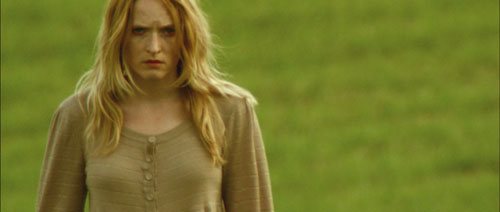
Una película como ‘When Heaven Falls’ (‘Himlen Falder’) que aborda una dura historia real sucedida hace un par de años en Dinamarca y lo hace de manera desgarradora y realista, pero sin renunciar a una realización arriesgada.
Y lo es en doble sentido, por una parte al director danés de origen afgano Manyar I. Parwani no le duelen prendas al entrar en detalles escabrosos y tremebundos de una historia de incesto que hiela la sangre. Y por otro, a la hora de afrontar una narración nada convencional, que acentúa en algunos momentos el estado casi paranoico que sufre la protagonista. A base, eso sí, de colores saturados, cámara inquieta y desenfoques a ritmo de músicas diversas.
Parwani no posee una formación cinematográfica de tipo académico, más bien resulta un autodidacta, lo cual no resultaría más que anecdótico, sino fuera porque posee talento a la hora de plasmar en imágenes un estado psicológico tan traumático como el de la protagonista.

Junto a la protagonista, asistimos a cómo las dos hermanas pequeñas (dos niñas) a quienes no conocía, necesitan de su ayuda. Un descubrimiento que termina por descolocarla aún más, de invocar los demonios de un pasado difícil de olvidar que le empujan a buscar un necesario final para poder subsistir.
Una realidad absolutamente repugnante que deja el cuerpo contraído, pero que viene a suponer un ejercicio de denuncia con una película sobrecogedora, interesante pero que tiene que cargar con unos hechos de los que uno preferiría no haber ni conocido.
‘La cinta blanca’(‘Das Weiße Band’) Michael Haneke
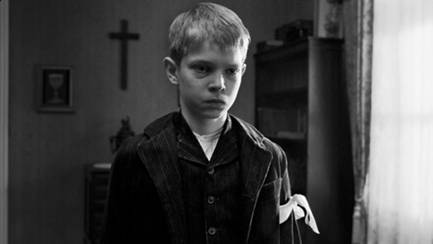
Las películas de Michael Haneke suelen incomodar al espectador en su asiento. Es un realizador al que gusta remover conciencias y, quizás por ello, tiene muchos detractores. Pero su cine, o su forma de concebirlo, precisamente intenta que reflexionemos, hacer que el espectador no asista impasivo a una historia y se olvide de ella justo al terminar. Y, con ‘La cinta blanca’, Haneke precisamente consigue este propósito. Fiel a su estilo, pero con un madurado y más inspirado resultado, hace un ejercicio inteligente de narración poderosa, para sumergirnos en el gérmen de la violencia. Tema recurrente, por otra parte, en sus películas.
‘La cinta blanca’ (‘The White Ribbon’) es un viaje a las entrañas del infierno humano, al menos, al germen de los peores aspectos de nuestro comportamiento. Haneke, para ello, nos sitúa en el ambiente opresivo y férreo de una pequeña población germana en los albores de la Primera Guerra Mundial. Una localidad protestante, con severas normas sociales y de comportamiento (educación, religión, familia…), que sirve de escenario para unos extraños sucesos, donde los niños tienen el protagonismo, y asisten a estos hechos y sus consecuencias.

El realizador de ‘Funny Games’ hace gala de su habitual mirada distante, gélida, pero a la par contundente, sin ceder ni un ápice a concesiones ni a pistas acerca de los episodios, cuya intriga va en aumento, pero genera en todo momento desconcierto absoluto. Apoyado en una austera pero brillantísima fotografía en blanco y negro, con ausencia total de partituras en la banda sonora, logra reflejar con rotundidad la asfixiante atmósfera del relato. No resulta un antojo estilístico, sino una forma de articular el lenguaje completamente apropiado a la historia, lo que evoca y que aumenta, si cabe, el aire misterioso que sobrevuela en todo momento.
Muy acertado resulta el uso de la mirada de los niños, como paradigma de la inocencia y la pureza (como la cinta blanca a la que alude el título), para transmitir un mensaje magistralmente articulado y apoyado en unas imágenes subyugantes, austeras, frías pero no exentas de una fuerza brutal, que justifica el ejercicio de estilo.
‘La cinta blanca’ no se digiere pronto. De hecho, su mensaje permanece en la memoria cuando termina le película y cada uno se lleva su conclusión, reflexión al salir de la sala. Porque la historia concluye, pero su esencia perdura. El mejor Haneke, sin duda.
Y por último una película de animación que mezcla la imagen 2D y 3D, con un dibujo divertido y un guión entretenido, con estupendos resultados y que nos narra con notable acierto las aventuras y desventuras de unos personajes de barrio en la periferia de Paris, y que aporta frescura y color al Certamen.
“Les Lascars”. Albert Pereira Lazaro, Emmanuel Klotz, Francia, Alemania

Esta ha sido a grandes rasgos la VI edición del Festival de Cine Europeo que ha rendido homenaje en esta ocasión al cine británico, repasando algunos de los mejores títulos de su cinematografía, así como dando cabida a los nuevos talentos, e incluyendo en su programación títulos que no deben perderse del cineasta de culto Nicolas Roeg :
§ Amenaza en la sombra / Don't Look Now . Italia, Reino Unido, 1973
§ Contratiempo / Bad Timing . Reino Unido, 1980
§ El hombre que cayó a la Tierra / The Man Who Fell to Herat. Reino Unido, 1976
§ Performance / Performance. Reino Unido, 1970
§ Puffball / Puffball. Reino Unido-Irlanda-Canadá, 2007
§ Walkabout / Walkabout. Australia-Reino Unido, 1971
y donde el español Fernando Trueba ha recibido el Premio de Honor del Festival por su carrera, proyectándose su última cinta ‘El baile de la victoria’, seleccionada para representar a España en los Oscar.

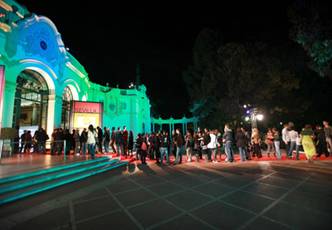

Desde Sevilla – España a 20 de Noviembre de 2009
Miguel Jiménez
El Taller de Zenon
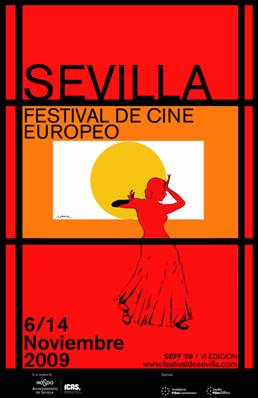
SEVILLEEUROPEAN FILM FESTIVAL 2009
OR THE YEAR OF THE WOMEN IN CINEMA
This is the first time the Festival, which has been hold in Seville from 6 to 14 November, presents a majority of women directors in its Official Section, according to the Director of the Festival, Javier Martín-Dominguez, and this emphasizes the fact that are women the ones who produce a significant amount of the most interesting films from Europe.
This has been a good chance to check once more the reality of gender-equality. If anybody hoped women to provide new points of view, new creative styles or some other innovation, natural consequence of the qualities always ascribed to their feminine nature, they have discovered that the oppressive globalization reaches the cinema and their look does not differ in fact from the men’s look, the same topics, the same treatment, the same style of a cinema that does not lead us anywhere, that has been proliferating year after year and whose presence in the Festival cannot be fully explained. This is in general terms; however, there were good decisions and some have been reflected on the awards, others were not so…
A separate remark must be made on these young women, the abundant child protagonists who convey a sense of what this generation of actresses will be in the future, incredible children performing roles with a maturity worth mentioning.
In a Festival with such an overwhelming presence of women directors who have finally been noticed in the awards of the Seville European Film Festival (SEFF) 2009:
OFFICIAL AWARDSSeville European Film Festival (SEFF) 2009
GOLDEN GIRALDILLO
'Lourdes' (Jessica Hausner, Austria-France-Germany)
SILVER GIRALDILLO
'Nothing Personal' (Urszula Antoniak, Holland-Ireland)
SPECIAL JURY PRIZE
'44 Inch Chest' (Malcolm Venville, United Kingdom)
BEST DIRECTION AWARD
Roland Vranik ('Transmission', Hungary)
GOLDEN GIRALDILLO TO THE BEST DOCUMENTARY FILM
‘Garbo, the spy ' (Edmon Roch, Spain)
EURIMAGES AWARD
'Tears of April' (Aku Louhimies, Finland-Germany-Greece)
AUDIENCE CHOICE AWARD
'A Prophet’ (Jacques Audiard, France)
EXTRAORDINARY AWARD JURY PRESIDENT
Pipilotti Rist ('Pepperminta', Switzerland-Austria)
YOUTH JURY AWARD
'Transmission' (Roland Vranik, Hungary)
GOLDEN GIRALDILLO OFFICIAL SECTION:'Lourdes' (by Jessica Hausner, Austria-France-Germany)
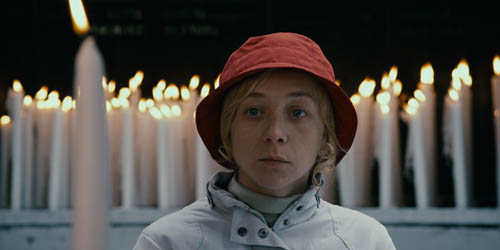
The third film by the Austrian Jessica Hausner (“Hotel”), “Lourdes”, was the favourite of the Section to the awards, and it was one of the most risky and daring films.
Focusing on a young woman trapped in a wheelchair, who apparently heals during a visit to Lourdes, the movie criticizes “the ambiguity of miracles”, according to the director herself in Seville.
It deals with an ironic and pessimistic portrayal of the set up business around the sanctuary of Lourdes, to which thousands of pilgrims go massively to search for a miraculous cure to their conditions. Hausner’s images perfectly grasp the kitsch Catholicism – visually powerful – that evolves a handicapped woman in her quest through the complex world of the temple and the relations of resentment and envy towards the other pilgrims and the nuns who accompany them. Lourdes is a film full of questions about the meaning of life, to which it answers in a maliciously pessimistic way.
SILVER GIRALDILLO OFFICIAL SECTION: 'Nothing Personal' (by Urszula Antoniak, Holland-Ireland)
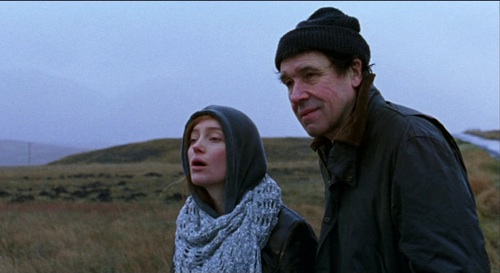
A truly relief in the middle of a heavy Official Section, ‘Nothing Personal’ by the debutant Urszula Antoniak is a film with an interesting proposal and a more than remarkable result compared to its hard competence.
Loneliness as the choice of a young Holland woman who wanders through Ireland, avoiding the human contact, the civilization, because of a reason which is unknown to us but it does not deprive the character of veracity. It does not really matter, because its director does not intend to narrate facts but she intends to take pleasure in the translation of images from the true feeling of loneliness and what it entails.
Peculiar and transgressive description of a feminine character exceptional in her consequent and extreme decision of voluntary isolation and personal freedom, without palliatives, ownerships, duties or bonds, especially a masculine one, tender, profoundly respectful, learned and generous.
It presents an isolated landscape, a lonely house, two characters alone for different reasons, on the one side the voluntary search and on the other side the passing of life. There is nothing personal between them, but the love which emerges, inexplicably or maybe necessarily. It does not matter.
The starring couple has a relationship based on the negation to answer any personal questions, which offers singular moments although well developed. The young girl, reluctant to any verbal contact, to which she answers with tough antipathy, accepts the shelter and food only for a job, which she does despite of the fact that they struggle to know things from each other, they finally keep both a distant relationship and of mutual confidence.
Although a little slow in its development, it keeps a firm tone and rhythm, with personality and not exempt from risk, avoiding to fall into the most conventional and searching for the cinematographic metaphor with moments of inspired lyricism. As those shots at the end of the film that deserve to be waited for.
Filmed with a rigorous planning, with an extraordinary use of images, colour, beauty of coastal landscapes, music and silences who dwell in it and which are integrated in the action as dramatic elements of first class, the result is a painfully delicate film, sometimes funny but without concessions…Profoundly beautiful and radical.
(It has also won the Andalusian Association of Cinematographic Writers award)
It is, without a doubt, the most interesting and haunting movies seen in the Official Section. It is no wonder that it has been awarded in international festivals, such as Locarno: Leopard for the Best Actress and Best First Feature, FIPRESCI Prize (International Federation of Cinematographic Press), CICAE Prize (International Art & Essay Cinema Confederation) and Youth Jury. Along with the previous awards it has won the Best Film, Best Director, Best Cinematography and Best Sound Design awards in the Netherland Film Festival.

SPECIAL JURY PRIZE: '44 Inch Chest' (by Malcolm Venville, United Kingdom)

It is a typically British product in its most conventional version.
It tells the story of an odd group of friends, petty gangsters that perform, with premeditation, cruelty and deliberation, the abduction of a young French man, lover of one of the member’s wife, for whom she is going to leave him.
It is basically developed in a single scenario, in a theatrical way, with certain flashbacks which provide the story with significant information, abundant dialogues and revealing situations of the personalities of the gangsters of a vociferous and disgustingly chauvinist male band who impose, with physical and verbal violence, their code of honour to a defenseless victim whose interpretation of the facts is negated to the audience. Also it is negated the wife’s version, and such is the malice of a deceitful film that only gives the floor and the chances to the allegedly offended part who are interpreted, and how, by an extraordinary cast in which the superb John Hurt, Tom Wilkison and Ian MacShane are noteworthy.
BEST DIRECTION / YOUTH JURY AWARDS: Roland Vranik ('Transmission', Hungary)
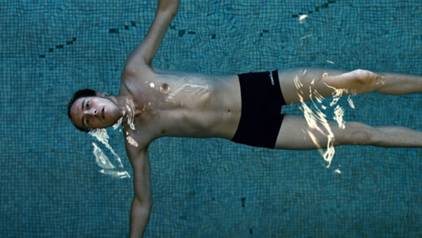
The Hungarian ‘Transmission’ deals with a private world of the audiovisual universe in which all the screens are off because of unknown reasons. It also analyses the effect of this fact on human beings who have suffered because of this event a loss of vital objects, and collective and individual identity.
This approach which is interesting in the beginning and is expected with enthusiasm to display an imaginative development, it is just that, a simple approach with a dull realization, repetitive and boring, a product which makes no sense at all.
One cannot understand then that a title that had won numerous snores during the showing, except the mass exodus from the theater room, ends up with two awards in this Section.
It is because if it is fully understood that it scares. It scares to think that the Youth Jury, future filmmakers, praises this film to the skies. Let’s take the opportunity now to watch as much cinema as we can, because the future is grey, dark grey…
Once paid due respect to the winners, we will mention several interesting films:
‘Eccentricities of a Blond Hair Girl’ (Portugal, France, Spain) by Manoel de Oliveira.
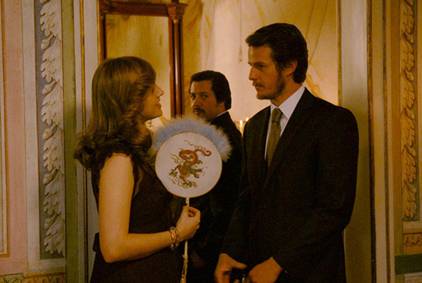
The hundred-year-old Manoel de Oliveira, who is exactly 101 years old and has lived with an enviable energy, has found the formula to renew himself and be true to his own style at the same time.
He fully shows it in this peculiar and little gem ‘Eccentricities of a Blond Hair Girl’, free adaptation of a story by Eça de Queiroz, about the star-crossed love of a shy accountant and the blonde hair girl mentioned in the title.
Being narrated visual, stylistic and verbally in a manner which results ceremonious, ritualistic, elegant, slow and deeply ironic, it has an enormous range of contents which will be reviewed when it will be released, and we hope it will, as it is not an ordinary film or easy to comprehend by the general audience.
It has a multiplicity of interpretations, even the most literal and primary one is very complex, and represents a challenge for not easy-going audiences. As I said, it is a treasure.
‘When Heaven Falls’ (‘Himlen Falder’) Manyar I.Parwani
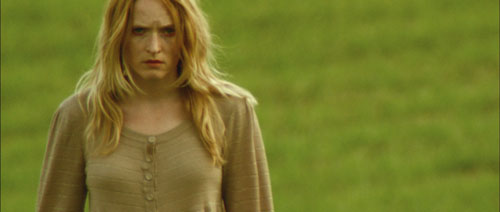
A film such as ‘When Heaven Falls’ (‘Himlen Falder’) which deals with hard real facts happened a couple of years ago in Denmark and it does it in a realistic and heartrending way, but without renouncing to a risky direction.
And it is so in a double meaning, the Danish but with afghan origins director Manyar I. Parwani has on the one side no qualms about going into terrible and lurid details of a story of incest that chill our blood, and on the other side when he faces a non-conventional narration at all, which emphasizes the almost paranoid state suffered by the protagonist. He achieves this, by means of saturate colours, unstable camera and taking shots out of focus to the rhythm of diverse music styles.
Parwani lacks an academic film training, instead he is a self-taught person, which could be only an anecdote, if it were not because he is a natural at capturing images of a psychological state as traumatic as the protagonist’s.

Along with the main character, we see how the two young sisters whom she did not know, need her help. It is a discovery that upsets her even more and invokes the demons of a past hard to forget that force her to look for a necessary end which allows her to survive.
This is a totally disgusting reality which breaks our hearts, but entails a denunciation by means of an overwhelming movie, that is interesting but it has to convey certain facts that one prefers not to have known.
‘The White Ribbon’(‘Das Weiße Band’) by Michael Haneke

Michael Haneke’s movies usually make the spectator uneasy on his/her seat. He is a director who likes making people aware of reality and perhaps because of this fact, he has many detractors. However, his filming style or his way to conceive it tries to make us think over, it makes the spectators not to turn a blind eye on a story and forget it when it is over. With ‘the White Ribbon’, Haneke precisely achieves it. True to his style, but with a more matured and inspired result, he displays an intelligent demonstration of powerful narrative, to become us absorbed into the very essence of violence. Besides, this is a recurrent topic in his movies.
‘The White Ribbon’ is a journey to the depths of the human hell, at least, to the very origin of the worst aspects of our behaviour. Haneke to do so takes us to the oppressive and severe setting of a small German town at the beginning of World War II. It is a protestant town, with severe social and behavior rules (education, religion, family, etc.), used as the scenario in which strange facts take place, where children are the protagonists and witness these events and their consequences.

The director of ‘Funny Games’ displays his habitual distant and frozen look which is at the same time convincing, without yielding an inch to concessions or clues about the incidents, and whose intrigue increases by the minute, though it creates an absolute puzzlement. Supported in a stark but brilliant black and white photography, with the total absence of music sheets in the score, it achieves to reflect with emphasis the oppressive atmosphere of the story. It is not a stylistic whim at all, but a way to articulate the appropriate language for the story, which evokes and increases, if possible, the mysterious air that surrounds us anytime.
It is a very wise choice the use of the children’s eyes, as a paradigm of innocence and purity (as the white ribbon mentioned in the title), to convey a message wonderfully articulated and supported on subduing, austere and cold images which don’t lack a brutal strength , that justifies the practice of his own style.
‘The White ribbon’ is not a film one can assimilate soon. In fact, its message remains in the memory when the movie ends and each person draws his/her own conclusion when leaving the theater. It is because the story ends, but its essence remains. This is the best Haneke, without a doubt.
Finally, a cartoon movie which mixes 2D and 3D images with funny drawings and an entertaining screenplay with amazing results and which narrates us the adventures and misfortunes of characters outskirts Paris. This has indeed, provided the Festival with colour and freshness.
“Les Lascars”. Albert Pereira Lazaro, Emmanuel Klotz, Francia, Alemania

In general terms, this has been the 4th edition of the European Film Festival, which has paid tribute to the British cinema, projecting some of the best titles of their filming history, as well as considering the emerging new talents, and including in their program titles that one should not miss by the cult director Nicolas Roeg:
Don't Look Now . Italy, United Kingdom, 1973
Bad Timing . United Kingdom, 1980
The Man Who Fell to Earth. United Kingdom, 1976
Performance / Performance. United Kingdom, 1970
Puffball / Puffball. United Kingdom-Ireland-Canada, 2007
Walkabout / Walkabout. Australia-United Kingdom, 1971
And where the Spanish directoy Fernando Trueba has been awarded with the Honorary Award for his career, screening his last film 'El baile de la victoria' ('The Dancer and the Thief'), selected by the Academy to represent Spain in the Oscar Ceremony.

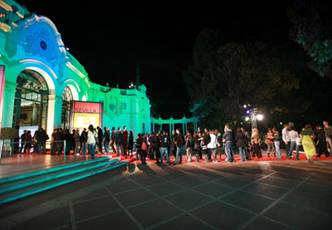

From Seville – Spain 23 November 2009
Miguel Jiménez
El Taller de Zenón
Translated by Diana Ribas Sevillano.
